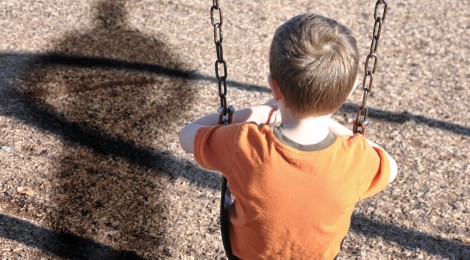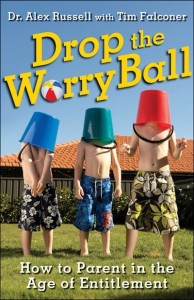
Book Review: “Drop the Worry Ball”
Parents are inundated with conflicting advice on how to raise their children. Pediatrician William Sears’ attachment parenting couldn’t be more different from the approach taken by “tiger mother” Amy Chua. The range of “how-to” styles can leave parents scratching their heads about what’s best.
Research tends to support an authoritative parenting style, a balance of clear guidelines and expectations paired with warmth and attentiveness. But in this age of perfected parenting, we are seeing an increase in anxiety and depression in children. Some think that caregivers are overparenting, and that this over-attentiveness may be causing problems.
In his latest book Drop the Worry Ball (2012, Wiley),clinical psychologist Alex Russell says that children no longer grow up; nowadays we raise them, placing all responsibility on the parents. This results in caretaking that is too protective, too involved. At the extreme, this becomes helicopter parenting. Parents “hover” nearby, hyper-aware of the risks and needs of their child before the child is able to evaluate a situation or make decisions on their own.

Russell’s observation of the two outcomes of over-parenting: too little or too much anxiety in children, parallel research of Ellen Sandester, professor at Queen Maud University College of Early Childhood Education in Norway. Sandester argues that it is through risk that children expose themselves to fearful situations, and the thrill experienced from coping with anxiety helps develop the child’s evaluation of their ability to cope with future challenges. When children are prevented from engaging in these non-catastrophic risks, they become either hypo-anxious or hyper-anxious. With the first, there is too little realistic perception of consequences, so the child seeks greater thrill or tries out more dangerous situations. With hyper-anxiety, the lack of experience leads the child to become phobic of novel situations.
Similar, but not identical to Sandester, Russell argues that we are seeing two kinds of children develop as a result of over-parenting. First, there are those who become disengaged or avoidant of stress and anxiety and don’t want to take on the adult world. And second, there is the hyper-anxious child, the pleaser and perfectionist. The imbalance of anxiety is created by anxious parents who hold the worry for their children –essentially shielding them from normal developmental experiences. Similar to Sandester’s analysis, these children are deprived of the opportunity to cope with healthy, necessary levels of stress and anxiety.

That anxious parents could produce anxious children is not surprising, but that over-attentive parenting leads to hypo-anxious, disengaged children seems counterintuitive. A lot of media attention has been given to the increasing numbers of children who are disengaged. Russell argues however, that the same parenting style can create this avoidance of anxiety. The parents make the adult world appear stressful and unmanageable, so why grow up?
Russell acknowledges that there is no quick fix, and that all parents make mistakes. He recommends a mindful approach to parenting. That is, a shift back to listening and reflecting on what the child says and does, instead of giving advice or actively taking over.
Parents need to appreciate that the child has the ability to cope with everyday risks, and need to give the child the space he or she needs to solve problems.
This book is a worthwhile read for parents. Sometimes we need to remind ourselves that raising kids is about being “good-enough,” not perfect.
After all, children do grow up, and seem to do this best with a little space to explore and learn from mistakes.
-Heather Carter-Simmons, Contributing Writer



